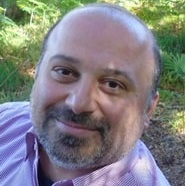Thermodynamics and Superconducting Devices
A special issue of Entropy (ISSN 1099-4300). This special issue belongs to the section "Thermodynamics".
Deadline for manuscript submissions: closed (15 September 2021) | Viewed by 4104
Special Issue Editors
Interests: quantum optics; quantum Zeno effect and Zeno dynamics; open quantum systems (decoherence, dissipation, non-Hermitian Hamiltonians); time-dependent Hamiltonians and coherent control; quantum thermodynamics
Interests: quantum optics; quantum thermodynamics; josephson junctions; open quantum systems
Special Issue Information
Recently, a great amount of interest has been focused on the study of devices made of superconducting elements, both from a fundamental and applicative point of view, in connection with thermodynamics. Indeed, superconducting devices at a quantum level have a plethora of applications, such as, for example, the realization and exploitation of Bose-Einstein condensates to observe quantum coherence and interference at a mesoscopic level. Another possible application is the implementation of artificial atoms, i.e., quantum systems with a structure of energy levels designed at will, which has brought forth the raise of the circuit quantum electrodynamics. Combined structures of superconductors and insulators allow for realizing Josephson junctions, which have been suggested as a possible way to realize caloritronic-based devices, where heat flows take the place of electric currents.
Since an interaction with the environment is always present, thermodynamical effects deserve to be addressed in this physical scenario. Moreover, thermal machines have been proposed which exploit Josephson junctions and artificial atoms realized with superconductors. Thus a deep understanding of thermodynamic aspects of such structures is timely and of upmost importance.
This special issue aims at collecting new results in the field of thermodynamics in the context of superconducting systems, both theoretical and experimental.
Dr. Benedetto Daniele Militello
Prof. Dr. Anna Napoli
Guest Editors
Manuscript Submission Information
Manuscripts should be submitted online at www.mdpi.com by registering and logging in to this website. Once you are registered, click here to go to the submission form. Manuscripts can be submitted until the deadline. All submissions that pass pre-check are peer-reviewed. Accepted papers will be published continuously in the journal (as soon as accepted) and will be listed together on the special issue website. Research articles, review articles as well as short communications are invited. For planned papers, a title and short abstract (about 100 words) can be sent to the Editorial Office for announcement on this website.
Submitted manuscripts should not have been published previously, nor be under consideration for publication elsewhere (except conference proceedings papers). All manuscripts are thoroughly refereed through a single-blind peer-review process. A guide for authors and other relevant information for submission of manuscripts is available on the Instructions for Authors page. Entropy is an international peer-reviewed open access monthly journal published by MDPI.
Please visit the Instructions for Authors page before submitting a manuscript. The Article Processing Charge (APC) for publication in this open access journal is 2600 CHF (Swiss Francs). Submitted papers should be well formatted and use good English. Authors may use MDPI's English editing service prior to publication or during author revisions.
Keywords
- quantum thermodynamics
- superconducting devices
- artificial atoms
- circuit QED
- caloritronics







